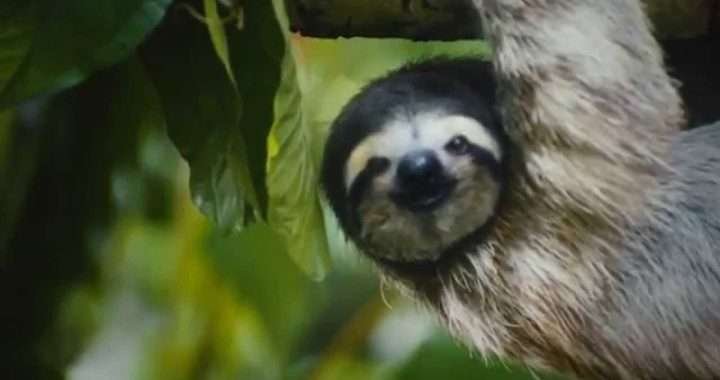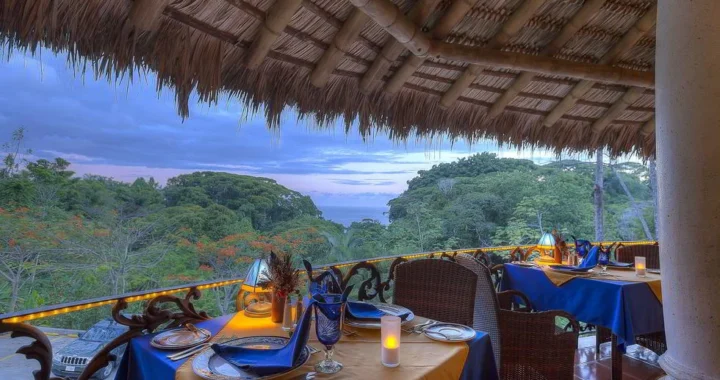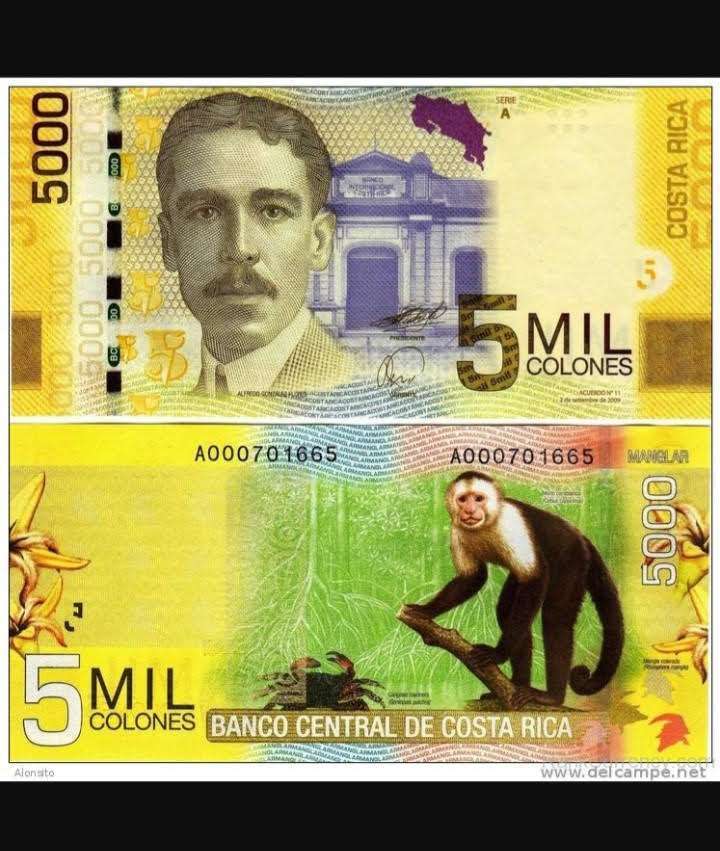
Costa Rican Banknotes are Beautiful
Autor: J.S.P.
Behold the 5,000 colones! Moving forward with our series of the beautiful money of Costa Rica, the 5,000 bill shows the theme of the red Mangrove.
We start with Alfredo González Flores, who served as President of Costa Rica from 1914 to 1917. Due to a coup d'ėtat on 27 January 1917, he was not able to complete his term in office.
Born in Heredia on 15 June 1877, he graduated from the Costa Rica Grammar School in 1896 and acquired a law degree in 1903. He founded the Normal School of Heredia, the National Electricity Cabinet, and the International Bank of Costa Rica (now the National Bank of Costa Rica). His creations also include the Agricultural Credit Meetings, which enabled a resurgence of economic, commercial, and industrial activity in Costa Rica.
Moving on to the wildlife depicted on this banknote, we have the flowers of a mangrove tree! There are over 50 species of mangroves in the world. They are known as "walking trees" as their root system appears to be walking on water. Their root system provides a home for fish and crustaceans, and the tree itself provides a home for mammals, birds, and reptiles. Mangroves are very beneficial in preventing erosion and flooding. They can grow to more than 80 feet in height. On the 5,000 Colones bill, the red mangrove is represented.
The crab shown goes by many names, including: red land crab, white spot crab, Halloween crab, mouthless crab, and harlequin crab. It is nocturnal and lives in the coastal rainforests of Central America, though it must return to the ocean to breed. Its burrows can be as long as 1.5 meters (4.9'). It is predominantly a herbivore, eating leaf litter and seedlings.
Finally, the Capuchin monkeys! Also called white-faced monkeys, they live in the wet lowland forests on the Caribbean coast of Costa Rica and Panama and dry deciduous forests on the Pacific coast. They can live in habitats up to 1,500 m in elevation.
These monkeys are diurnal and arboreal and can frequently be seen using their prehensile tails and arms to swing between trees — group size averages at 15, with one adult male leading the troop. The females have one baby every 1 to 2 years clinging to the mother for the first 5 or 6 months of life. Most of their time is spent traveling and foraging, beginning at daybreak and moving until they stop for the night.
They seek food from the forest floor up to the top of trees. A troop will travel to a spring or other source to drink water. Their diverse diets have a strong effect on the vegetative populations in their habitats. They are known to disperse some species' seeds, pruning others, which stimulates branching, and eating insects that would otherwise damage the plants. Sometimes this is not a positive outcome as while they are eating ant colonies that live inside acacia trees and capuchins can destroy the plants to get to the ants. The main predators of capuchins may be large raptors, boa constrictors, and cats.
In the next issue, we will continue exploring the 10,000 Costa Rican banknote with insights on José Figueres Ferrer and the Rainforest theme, including the brown-throated sloth, cup fungi, and the Eriopsis orchid.

Busting Myths About Costa Rica Destination, Free Costa Rica Magazine #99
We’ve recently seen misinformation circulating suggesting that Costa Rica is an expensive destination.
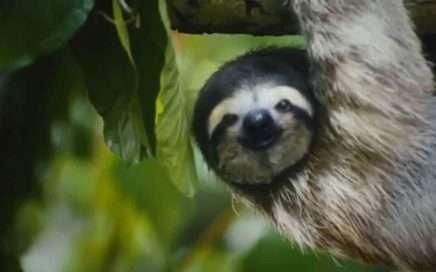
Debunking myths about Costa Rica’s South Pacific destination
There is false information circulating that suggests the South Pacific Costa Rica is an expensive destination
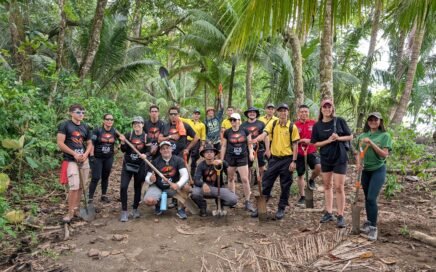
Beach Clean Up in Uvita: Community Spirit in Action at Marino Ballena National Park
Beach Clean Up in Uvita Community Spirit in Action at Marino Ballena National Park Author: Sophie Schindler
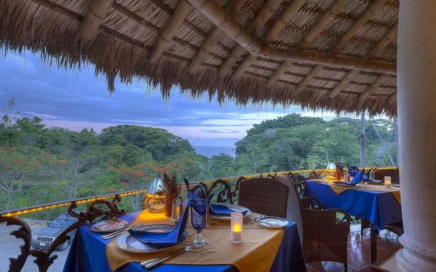
Costa Rica’s First 100% Gluten-Free Gourmet Restaurant
Costa Rica’s First 100% Gluten-Free Gourmet Restaurant La Palapa Restaurant: Indulgence Without Compromise Travelers come to Costa Rica seeking nature, adventure – and memorable dining. At Cuna del Ángel, a boutique hotel nestled in the […]

Adventure Begins Where Comfort Ends: Our Rain-Soaked Snorkeling Tour to Caño Island
What I Learned from Traveling in the Rain or Why a Plastic Cape Can Teach Humility Our Snorkeling Tour to Caño Island

Increasing Biodiversity in the Path of the Tapir Biological Corridor
The area including the Path of the Tapir Biological Corridor in Costa Rica, is one of the few places with increasing biodiversity.
Aktivitäts- , Essens- und Übernachtungsmöglichkeiten
- Aktivitäten und Touren
- Wal- und Delfinbeobachtungstouren
- Costa Ballena - Natur
- Nationalpark Marino Ballena
- Restaurants
- Hotels
Wir stellen für Sie gerne auch Geschäftsverzeichnisse, Landkarten oder sonstige Informationen zur Verfügung :
Entdecke und genieß…
Gönn dir…
Brauchen Sie Hilfe bei der Planung ihrer Reise nach Costa Rica? Wir helfen Ihnen gerne weiter !
Email: carlos@ballenatales.com
Telefon: +(506) 8946 7134 oder +(506) 8914 1568
